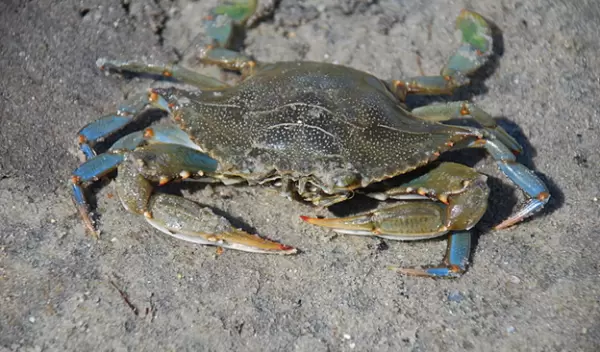
'Beautiful swimmers' attack at low tide
David Johnson, an ecologist at William & Mary's Virginia Institute of Marine Science, has spent more than 20 years mucking in salt marshes along the U.S. East and Gulf coasts. But while doing research in a Virginia salt marsh at low tide last September, he and colleagues glimpsed something they'd never seen before — blue crabs ambushing fiddler crabs from shallow, water-filled pits.
"It was amazing because here was an aquatic predator — one that lives, eats, breathes and breeds under water — feeding out of the water," says Johnson. "It was like crocodiles ambushing wildebeests in Africa."
Johnson reports the U.S. National Science Foundation-supported discovery, which took place at the Virginia Coast Reserve Long-Term Ecological Research site, in the journal Ecology. "This study shows that nature is still providing surprises to scientists who venture into the field and take the time to closely observe what's happening around them,” says Doug Levey, a program director in NSF's Division of Environmental Biology.
Johnson and colleagues — Serina Wittyngham and Leah Scott at VIMS, and Cora Baird at the University of Virginia — believe these ambush-style attacks from pits at low tide are the first recorded for blue crabs or any other swimming crabs, save for an earlier anecdotal account from Richard Heard at the University of Southern Mississippi.
"It was really hot — 95 degrees — and the tide wasn't going to return for another three hours," says Johnson. "But these aquatic crabs had figured out a way to feed at low tide: dig shallow pits that fill with water and wait for prey to come to you. One crab was 70 meters away from the shoreline. That's 800 body lengths.”
The researchers watched as the blue crabs emerged from the muddy camouflage of their pits, then stalked and snatched fiddler crabs and scampered back to the pits to devour their prey. Johnson says the area looked like "the discarded bones of villagers outside a dragon's lair."
Scientists had long thought that during low tide, the exposed marsh surface provided the fiddlers a refuge. "Blue crabs have been known to dash a few feet onto land to snatch fiddler crabs before returning to the water to eat them," says Johnson. "But the behavior we saw was different. Blue crabs were not chasing their prey on land; they were waiting on land for their prey to come to them."
The discovery has raised a tide of questions. How common is this behavior among blue crabs, and how successful is it? How do blue crabs deal with the risks of hunting ashore, such as exposure to predators like herons and egrets? Might other aquatic species use a similar hunting strategy?
Johnson returned to the same marsh two weeks after the initial observations to record blue crab densities, sizes and attacks. The follow-up visit, along with subsequent video from trail cams, confirmed the behavior.


